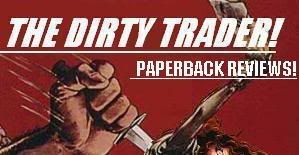

It seems like a good idea on paper: Return most of the iconic elements from classic Wonder Woman stories excised by George Perez in his 1987 revision of the character and relaunch her book for a new audience. Three simultaneous generations of Wonder Women, extensive rogues gallery, blind diminutive Asian mentor I-Ching, the Diana Prince secret identity, spinning transformations, invisible jet, and even some powerless globe-trotting adventures in white leather. You've got a well-liked television writer who'd successfully transitioned into comics at Marvel, and an artist whose popular work took cues from a fan favorite Wonder Woman cover artist. What could go wrong?
For starters, a five issue story taking a year and a half to tell, requiring other talents to continue the series, while the conclusion was served in an extant annual. Terry and Rachael Dodson's art was attractive, but for a book that very badly wanted to emulate Jim Lee's work on "Batman: Hush," not quite enough to put it over when the story proved weaker than Jeph Loeb's on "Batman: Hush." A good deal of the first issue was spent explaining that Princess Diana had become a wanted murderess who had fled from her duties and people. This is how you want to introduce new readers to the most famous super-heroine of all, and worse, mention it as an afterthought, without offering resolution nor redemption?
Donna Troy, the former Wonder Girl, had appointed herself the new Wonder Woman in Diana's absence. Never mind what a train wreck Donna's back story is, or how she's never had much of a connection to Wonder Woman beyond her name and powers. It takes Troy's defeat and capture to bring the real Wonder Woman out of hiding, which only reinforces Troy's b-list status, while making Diana Prince look no less the shiftless sort. There's even one of those vaguely misogynistic moments where a phallic object impales the heroine, for a bit of metaphoric rape. The whole legacy angle fairly reeks of other heroes' books, leftovers from the Superman or Batman Families foisted on Wonder Woman without regard for the ill fit.
Steve Trevor, little used since the late '80s and far from relevant, makes a cameo appearance as a hostage. The Diana Prince identity is actually created by Batman and gifted to Wonder Woman, making her new origin dependent on the Dark Knight, and undercutting any drive or resourcefulness on her part. Nemesis, star of a back-up series from 1970s Batman comics, is transformed into Diana Prince's new partner and love interest. So again, what was Steve Trevor doing here, other than to remind readers that we're meant to find Batman's cast-offs more interesting than anything from Wonder Woman's cannon? By the way, Diana Prince's new boss is Sarge Steel, an old Charlton Comics character that never amounted to much, but now gets to lord it over an Amazon Princess.
Villains Cheetah and Giganta are given redesigned costumes so similar and bland that they could be confused with one another. Circe's new look is so generic, her only memorable visual is when she changes into a lavender variation on the Wonder Woman costume. Dr. Poison, Silver Swan, and more appear as punching bags for a few panels here and there. The resolution involves an army of heroes coming to the Amazing Amazon's aid, insuring both victory and no additional credit being extended to our very needy heroine.
There's much seeming ado about "Who is Wonder Woman," but upon closer inspection, it all amounts to nothing. The plot meanders near endlessly, before fumbling toward a stopping point, but considerably less than an ending. Writer Allan Heinberg wastes Wonder Woman, his artists, and his opportunity. If he hasn't already, be sure not to let him waste your time, as well.


No comments:
Post a Comment